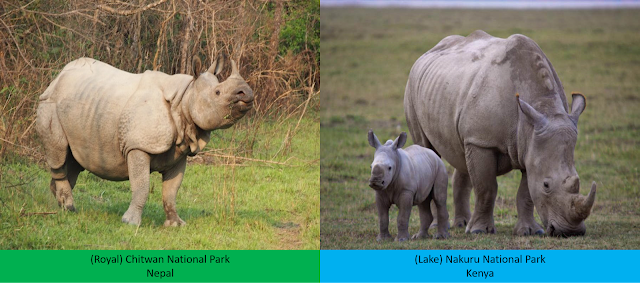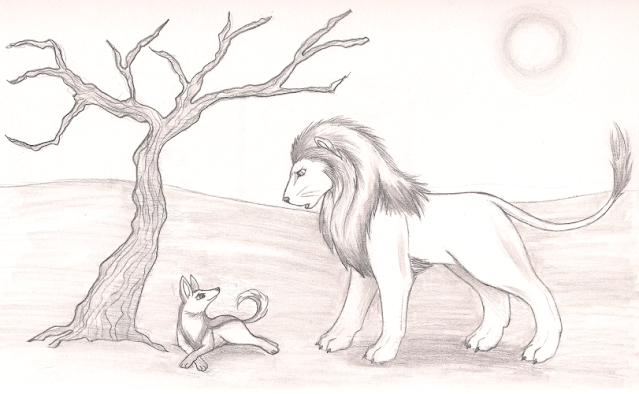Rhinoceros Popularity
Rhinos are one of the world’s most popular animals and are
sadly on the verge of extinction. Day by day rhinos are killed for their horns
which are wrongly believed to have medicinal properties. This results in a loss
of life and the orphaning of rhinoceros calves. In order to prevent this, zoos
and wildlife parks worldwide are striving to protect an animal that is a relic
of prehistoric times. The importance of rhinos is showcased at many a zoo although
for most people it is seeing a wild rhinoceros that is more important. There
are five species of Rhinoceros, three Asian, the Indian rhinoceros, the Javan
rhinoceros and the Sumatran rhinoceros and two African, the Square-lipped or
white rhinoceros and the hook-lipped or black rhinoceros. While both the black
and the white rhinoceros are restricted mainly to Southern and East Africa, the
Indian rhinoceros is found in not just India but Nepal as well while the
Sumatran rhinoceros and the Javan rhinoceros are present only in Southeast
Asia. Two national parks in the world where rhinos are popular are Chitwan
national park in Nepal and Nakuru national park in Kenya. The world of the
rhinoceros in both these national parks are similar and different in every way
and this does not apply just to the rhinoceros alone but also to the many
animals that share the home of the rhinoceros in the wild who are as wonderful
as the rhinoceros
1. The Indian rhinoceros and the white rhinoceros
in Chitwan and Nakuru respectively are the highlights of the national parks
that they are found in. They are also the largest of their respective species’,
the white rhinoceros is the larger of Africa’s two rhinoceros species while the
Indian rhinoceros is the largest of all Asian rhinos. However, the Indian
rhinoceros is larger than the white rhinoceros and both black and white rhinos
are found in Nakuru national park
2. Chitwan is part of the Terai region of
South-Central Nepal extending into Northeast India. Similarly, Nakuru is part
of the Great Rift Valley that spreads through East Africa and Central Africa as
well as Ethiopia
3. Chitwan consists of mainly forests and grassland
although there is more forest than grassland. However, this is completely
reversed in Nakuru where there is more grassland than forest. Nonetheless, both
national parks are still a rhino’s paradise although the former is neighboured
by other national parks unlike the latter which is named after a lake in the
park
4. Conservation measures to protect rhinos in Chitwan
takes place between India and Nepal where rhinos may be shipped to or from for
the national parks in these places where they make their home. Rhinos from
India may be shipped from India to Nepal where they find a home in Chitwan. A
similar procedure occurs in Kenya where white rhinos from South Africa may be
shipped to Kenya where they are introduced into Nakuru. White rhinos do not
occur naturally in Kenya given the decline of the Kenyan population and as with
the rest of Kenya most of the white rhinos seen in Nakuru are either from South
Africa or Namibia
5. Unlike rhinos in Chitwan which may be
unpredictable and prone to sometimes charging tourists, rhinos in Nakuru are
accustomed to the presence of tourists although when it comes to the latter,
the black rhinoceros like the Indian rhinoceros is more aggressive and
unpredictable unlike the white rhinoceros which is a docile and peace-loving
animal
6. Rhinos face no competition from elephants in
either Chitwan or Nakuru since elephants do not occur naturally in either
national park though in the case of the former, rhinos may encounter
domesticated elephants ferrying tourists into the wild and this may cause an
unintentional conflict between both elephant and rhinoceros. Elephants may also
enter the valleys of Chitwan from the neighbouring Valmiki national park in
search of potential mates
7.
In Chitwan, the cats that share the home of the
rhinoceros include the tiger, the leopard, the jungle cat, the fishing cat and
the leopard cat. In Nakuru the only cats that share their home with the
rhinoceros are the lion, the leopard and the cheetah. Both tigers and lions in
Chitwan and Nakuru respectively will sometimes attempt to take rhinos for food
although they are likely to have more success with sick or weak rhinos as well
as unprotected calves although they risk being charged at by the mothers. Otherwise the rhinoceros is not an animal on the menu
for a big cat
8. In Chitwan as well as the rhinoceros, the other
giants of the national park are the gaur or Indian bison and the sloth bear. In
addition to the rhinoceros in Nakuru other giants in the national park are the
African buffalo and the giraffe. However, regarding the members of the cattle
family that share the home of the rhinoceros, the gaur is a peaceable gentle
animal while the African buffalo is regarded to be among the most dangerous
animals in Africa. In the case of Chitwan’s giants only two are herbivores
while all of Nakuru’s giants are herbivores
9. The dhole or Indian wild dog is a rare sight in
Chitwan and so too is the golden jackal. In Nakuru the only species of wild dog
present is the black-backed jackal. Jackals in both Chitwan and Nakuru may
attempt to snatch young rhinos who are unprotected, but they may risk being
charged at by the protective mothers.
10.
While crocodiles occur in Chitwan, there are no
crocodiles in Nakuru
11.
Wild boar are common in Chitwan. In Nakuru, the
only member of the pig family is the warthog
12.
There are many species of deer in Chitwan such
as the muntjac, the chital deer (also known as the axis or spotted deer), the
sambar deer and the hog deer. Similarly, many species of antelope are found in
Nakuru such as the gazelle, the impala, the eland, the wildebeest and the
waterbuck
13.
As much as Chitwan is considered a rhino’s
paradise it is also considered a bird’s paradise since there are numerous
species of birds inhabiting the park. The same is also said of Nakuru although unlike
Chitwan, Nakuru was once designated a bird sanctuary
14.
Many species of snakes including venomous snakes
like the cobra inhabit Chitwan. The only snake present in Nakuru is the python
15.
In Chitwan, there are two ways in which to go on
safari to see rhinos and other wildlife; one is of course going by a safari
jeep or rover and the other option is something that is as celebrated in Nepal
as it is in India and that is riding an elephant into the jungle. In Nakuru,
safari in a jeep is the only option to go out to explore the world of Nakuru




Comments
Post a Comment